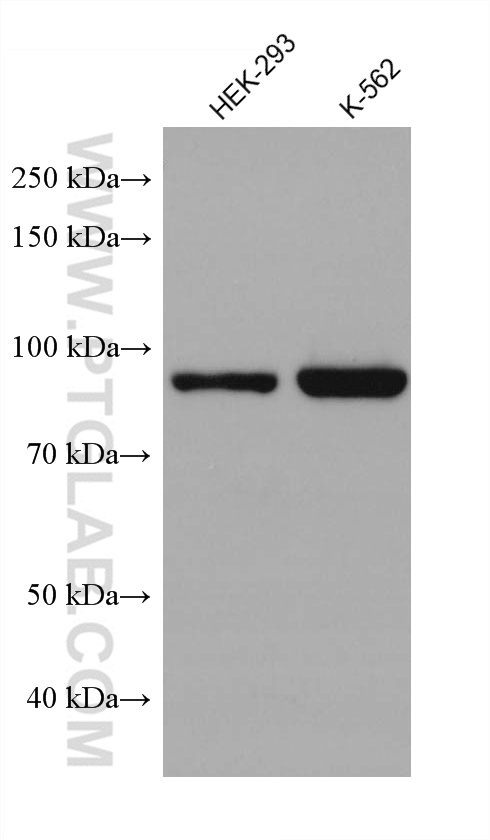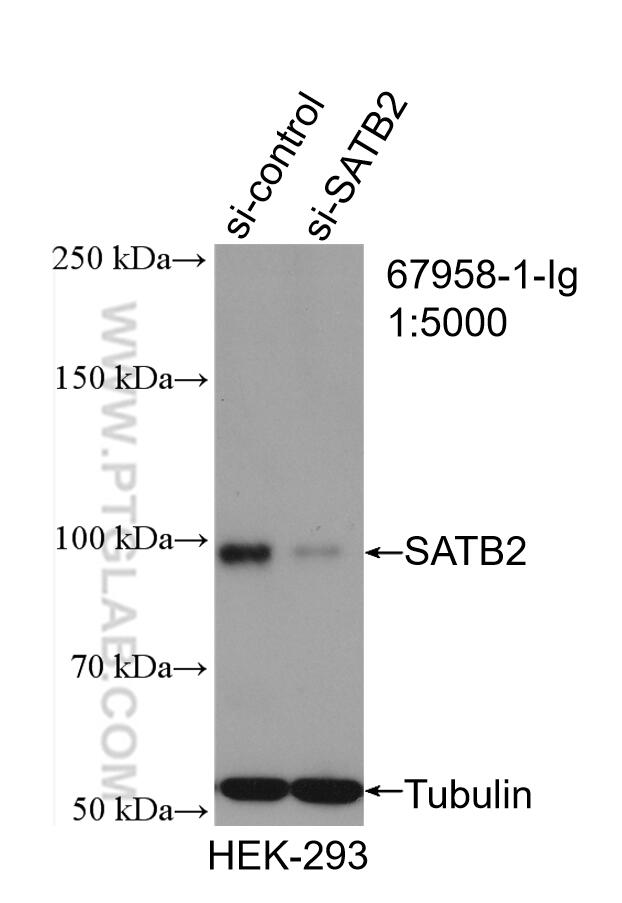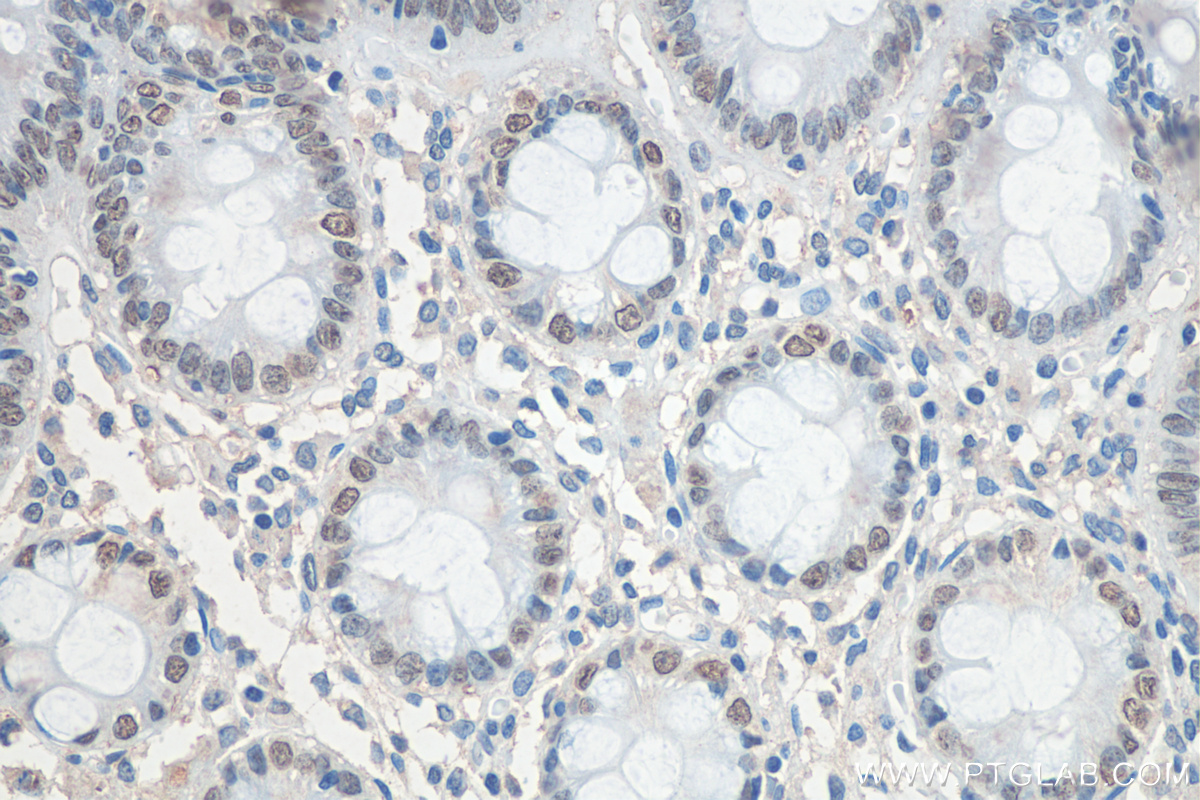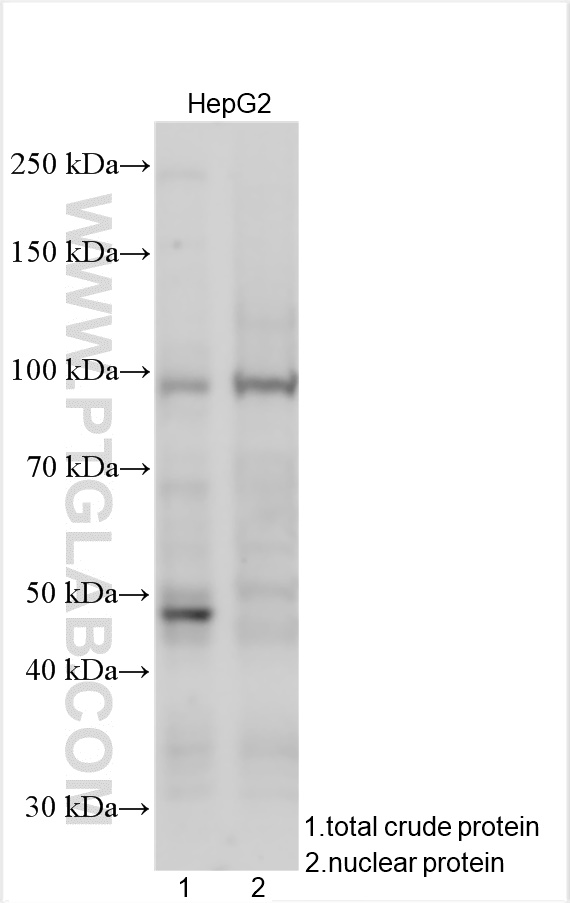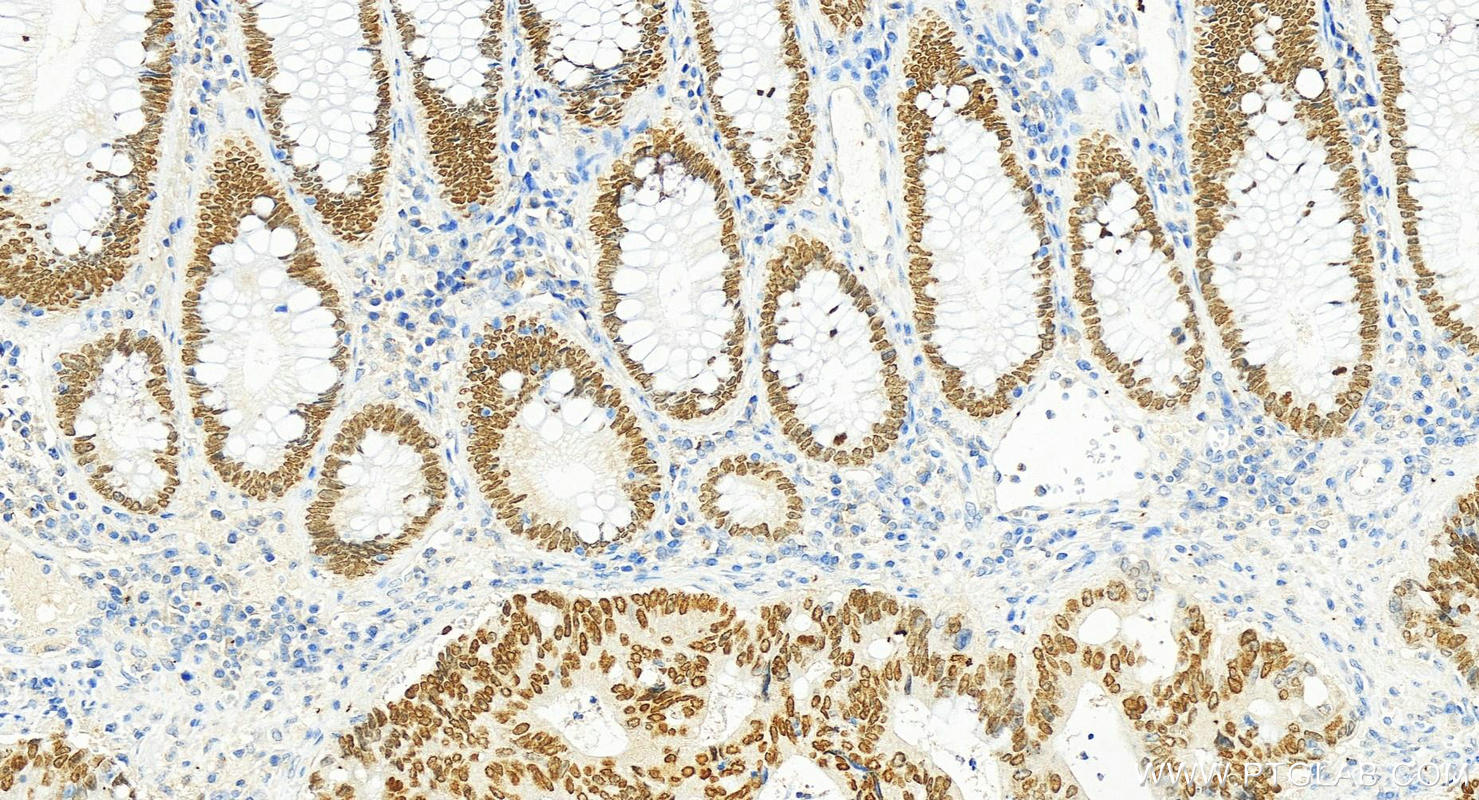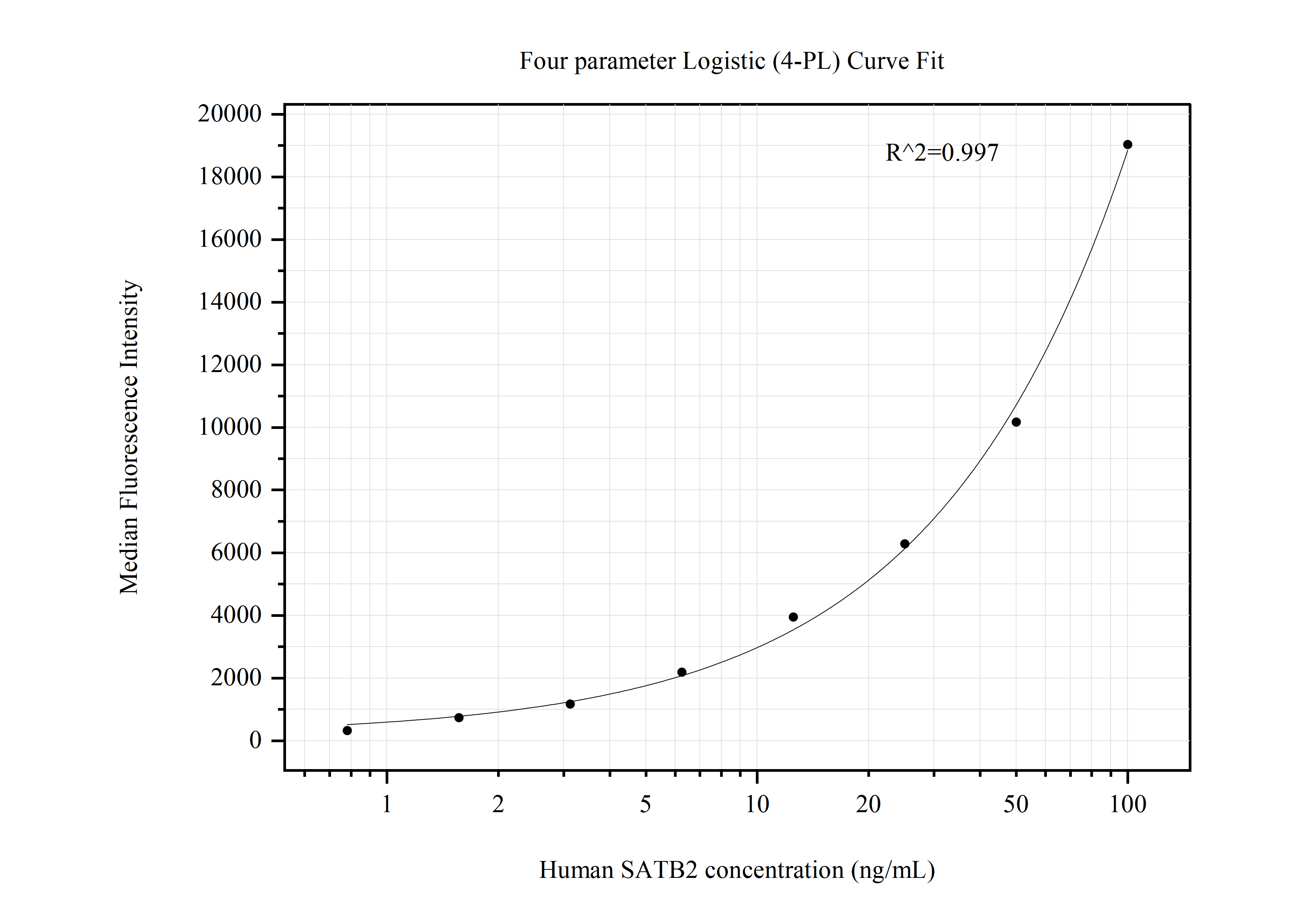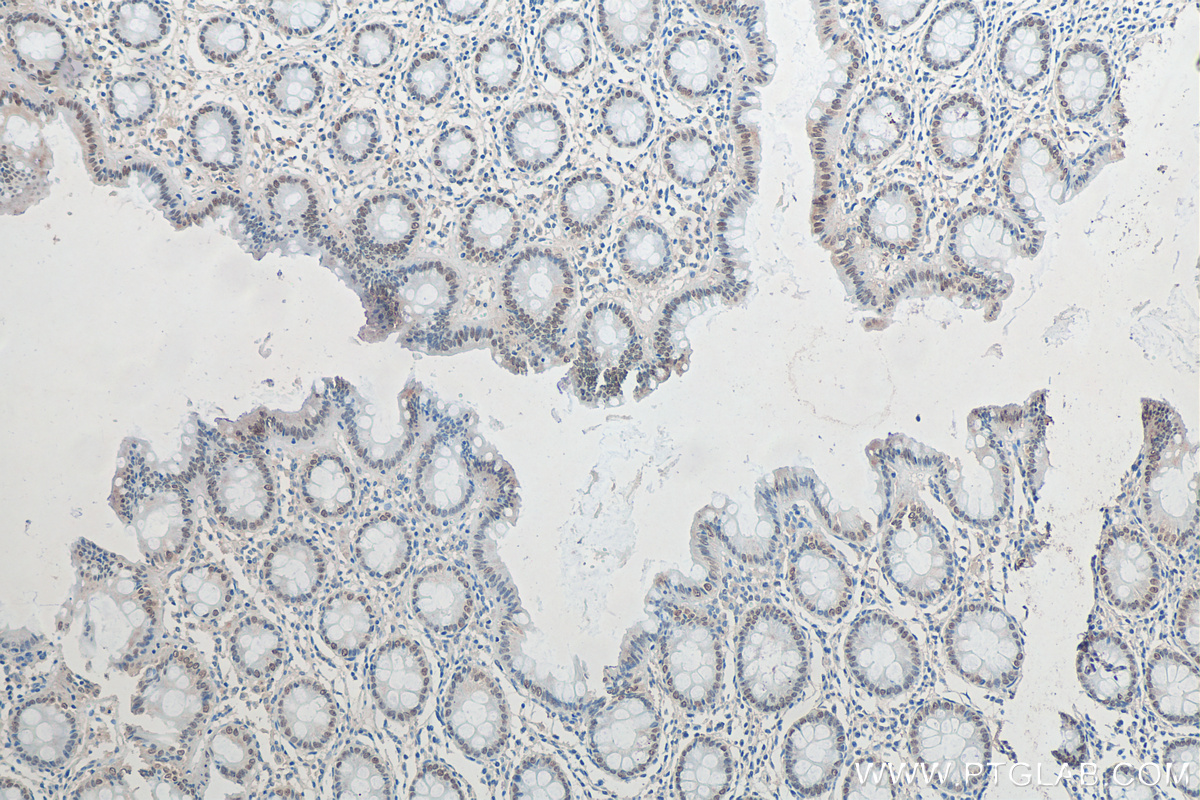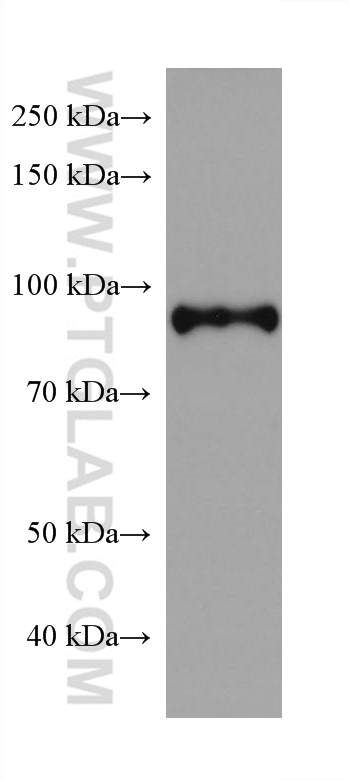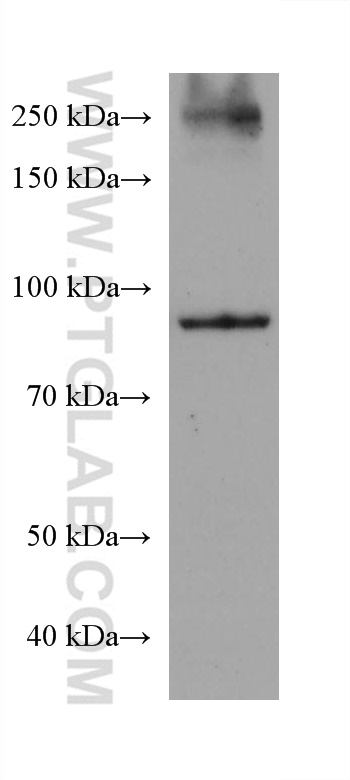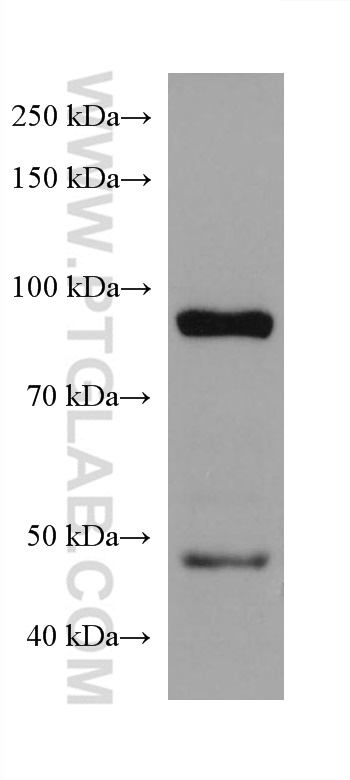验证数据展示
产品信息
67958-1-PBS targets SATB2 as part of a matched antibody pair:
MP50682-1: 67958-1-PBS capture and 67958-2-PBS detection (validated in Cytometric bead array)
Unconjugated mouse monoclonal antibody pair in PBS only (BSA and azide free) storage buffer at a concentration of 1 mg/mL, ready for conjugation.
This conjugation ready format makes antibodies ideal for use in many applications including: ELISAs, multiplex assays requiring matched pairs, mass cytometry, and multiplex imaging applications.Antibody use should be optimized by the end user for each application and assay.
| 经测试应用 | WB, IHC, Cytometric bead array, Indirect ELISA Application Description |
| 经测试反应性 | human, mouse |
| 免疫原 |
CatNo: Ag17237 Product name: Recombinant human SATB2 protein Source: e coli.-derived, PET28a Tag: 6*His Domain: 228-369 aa of BC098136 Sequence: KYKKIKVERVERENLSDYCVLGQRPMHLPNMNQLASLGKTNEQSPHSQIHHSTPIRNQVPALQPIMSPGLLSPQLSPQLVRQQIAMAHLINQQIAVSRLLAHQHPQAINQQFLNHPPIPRAVKPEPTNSSVEVSPDIYQQVR 种属同源性预测 |
| 宿主/亚型 | Mouse / IgG1 |
| 抗体类别 | Monoclonal |
| 产品类型 | Antibody |
| 全称 | SATB homeobox 2 |
| 别名 | KIAA1034, FLJ32076, FLJ21474, DNA-binding protein SATB2, DNA binding protein SATB2 |
| 计算分子量 | 733 aa, 83 kDa |
| 观测分子量 | 85-100 kDa |
| GenBank蛋白编号 | BC098136 |
| 基因名称 | SATB2 |
| Gene ID (NCBI) | 23314 |
| RRID | AB_2918709 |
| 偶联类型 | Unconjugated |
| 形式 | Liquid |
| 纯化方式 | Protein G purification |
| UNIPROT ID | Q9UPW6 |
| 储存缓冲液 | PBS only, pH 7.3. |
| 储存条件 | Store at -80°C. The product is shipped with ice packs. Upon receipt, store it immediately at -80°C |
背景介绍
SATB2, also named as KIAA1034, belongs to the CUT homeobox family. SATB2 binds to DNA at nuclear matrix- or scaffold-associated regions. STAB2 recognizes the sugar-phosphate structure of double-stranded DNA. SATB2 is a transcription factor controlling nuclear gene expression, by binding to matrix attachment regions (MARs) of DNA and inducing a local chromatin-loop remodeling. SATB2 acts as a docking site for several chromatin remodeling enzymes and also by recruiting corepressors (HDACs) or coactivators (HATs) directly to promoters and enhancers. It is required for the initiation of the upper-layer neurons (UL1) specific genetic program and for the inactivation of deep-layer neurons (DL) and UL2 specific genes, probably by modulating BCL11B expression. It is a repressor of Ctip2 and regulatory determinant of corticocortical connections in the developing cerebral cortex. SATB2 may play an important role in palate formation. SATB2 acts as a molecular node in a transcriptional network regulating skeletal development and osteoblast differentiation. SATB2 has two isoforms produced by alternative splicing with the MW of 70 kDa and 83 kDa. It can be detected as 85-105 kDa by sumo modification (PMID: 14701874, PMID: 35140581).

